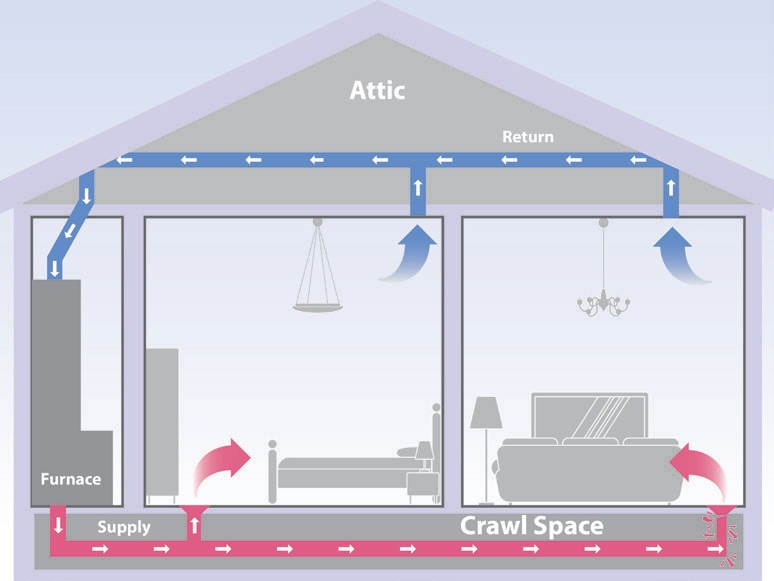Q: My HVAC system is a mystery to me. What can I do to maintain it and keep my home comfortable year-round?
A: For most people, the inner workings of the HVAC system remain out of sight, out of mind. Understanding the basics of how a heating and cooling system works will help you create a more efficient, comfortable living space.
A forced-air system consists of the equipment that heats or cools the air and the ductwork that moves it around the home. Your furnace or air handler has a fan inside that pushes the heated or cooled air through the supply ducts into the rooms. The return ducts bring in air to be heated or cooled again and sent back through the home. This continuous loop of supply and return is susceptible to inefficient practices and leakage.
Here are some steps you can take to keep your system running efficiently and maintain a comfortable living space:
Check your vent dampers
Make sure the air you paid to heat or cool is freely moving through the home. I wish vents were made without dampers because the feature creates the misconception that they should be closed. Closing registers does not save energy. It can cause your system to work harder, shortening its lifespan and increasing duct leakage.
If you don’t do anything else after you read this, do check that your supply register dampers are open and not blocked by furniture or rugs throughout your home. This is easy to do and costs nothing.
Seal your ducts
If your ductwork travels through an attic, crawl space or other unconditioned space, it could have holes, cracks or gaps that cause duct leakage. This wastes energy and money by heating or cooling spaces you don’t use.
The U.S. Department of Energy estimates that 20 percent to 30 percent of the air moved through duct systems is lost to leakage. You could have the most efficient heating or cooling unit available, but if your ducts leak, you’re wasting energy.
In addition to wasted energy, leaky ducts can cause air-quality issues. Leaks in return ducts can pull air into the ducts from surrounding spaces, through the furnace, then deliver it into the home. This can introduce dust, dirt and other gross stuff that is in your attic, crawl space or walls.

Sealing ducts can be difficult because they are hidden behind the walls, floor and/or ceiling. Attics and crawl spaces can be hard places to work. You can hire a professional with specialized equipment to test your duct system for leakage and seal your ducts.
If you seal ducts yourself, do not use duct tape, which dries out quickly and loses adhesion. Seal with metal tape or duct mastic specifically designed for the job.
One relatively easy place to seal is where the duct meets the floor, wall or ceiling. Remove the registers and look for cracks or gaps around the edges.
Change your filter
The filter is on the return side of the duct system. It could be in the return registers or in the furnace. Checking your system’s filter regularly and replacing it when dirty can help you improve your heating and cooling efficiency.
When it comes to filters, my philosophy is to buy cheap and replace often. I don’t know about you, but I have a much more difficult time throwing away a $20 filter than a $5 filter. Save by buying filters in bulk or set up auto ship for every three months.
In most cases, filters are designed to protect the furnace, not improve air quality. If you are worried about your home’s air quality, getting the ducts cleaned and sealed can help. Add an air purifier if you need additional air filtration. Look for Energy Star-rated models.


